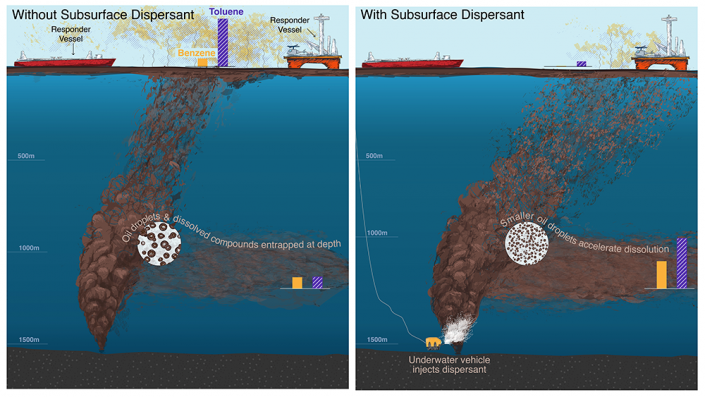Government and industry adopt model for predicting oil-spill impact

The only good thing about oil spills is that they are extremely rare. In fact, there has only been one recorded deep-water ocean spill. But their rarity presents its own problems when it comes to choosing how to react to them. That’s why research done at Texas A&M University to create stronger prediction models will play a critical role in assessing the pros and cons of tactics used in future spills.
The Texas A&M Oilspill Calculator model developed by Scott Socolofsky, professor in the Zachry Department of Civil Engineering, and his team is being used by the U.S. National Oceanographic and Atmospheric Administration in its oil spill model GNOME (General NOAA Operational Modeling Environment).
The severity of an oil spill’s impact depends on the amount and source of oil, what courses of action responders choose and the physical properties of the oil.
The presence of oil in the ocean affects surface and subsurface organisms and resources linked in a complex way, including humans. Damages include that which we see directly impacting wildlife, such as coating birds or mammals with a layer of oil, and the toxicity of the oil itself, which may be poisonous at high enough concentrations.
Oil spill research at Texas A&M seeks to mitigate the effects of future spills, predict the hazard conditions under future spill scenarios and help with decision support in future spills for the response effort. It takes into consideration the solubility of oil, something previously ignored in past models, which allows for different predictions of impact on the ecosystem.
“With the Texas A&M Oilspill Calculator we are able to demonstrate the best choices for a blowout model and help to improve model prediction,” Socolofsky said. “Better predictions will save resources during the next major subsea blowout by helping to direct the response.”
The adoption of the model by government and industry earned Socolofsky a College of Engineering Research Impact Award this year. The team is also now working with NOAA to predict what might happen for an accidental blowout in the Arctic.

